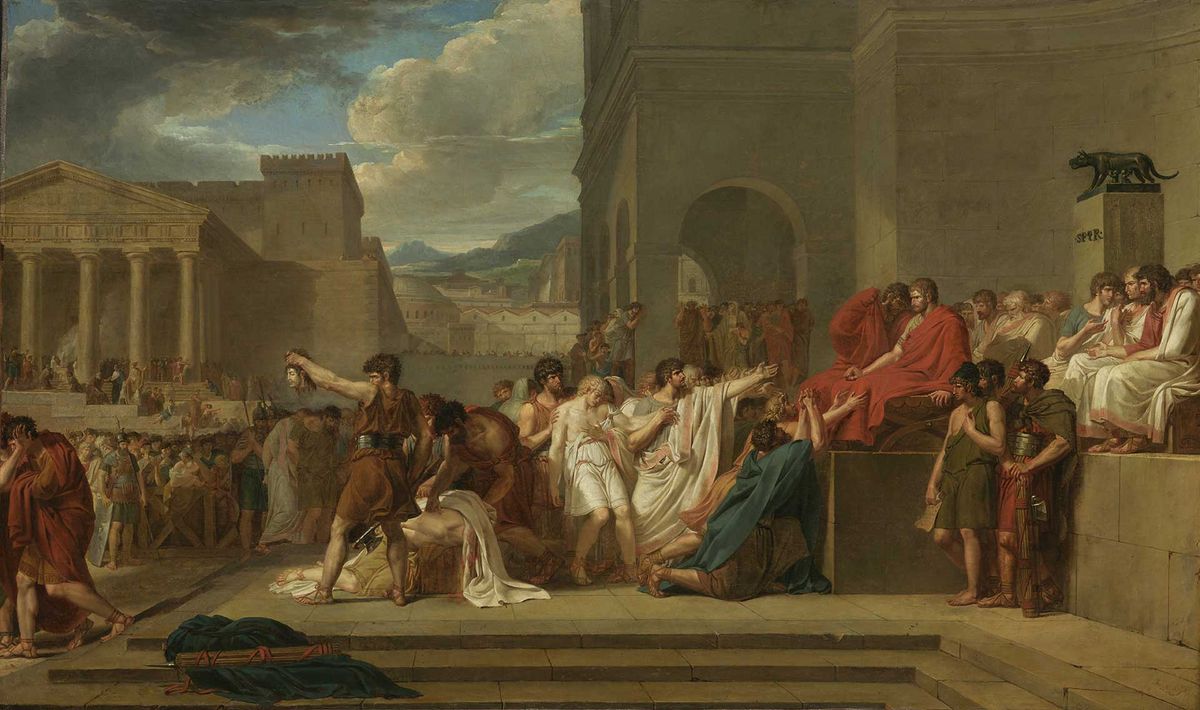Neo-Classicism, arguably the world’s first truly international style in the fine and applied arts, held sway from around 1760 to 1830, leaving its mark from Versailles to Virginia. Revelatory in the hands of its signature geniuses, the painter Jacques-Louis David and the sculptor Antonio Canova, it fell victim to the vigour of Romanticism, and, with the exception of its banner figures, has been largely discounted or derided ever since.
That longstanding lack of interest means that many Neo-Classical artists of note have been overlooked. This year, the Clark Art Institute in Williamstown, Massachusetts, and the Musée du Louvre in Paris are mounting a wholesale reassessment of a nearly forgotten figure in the movement: the Caribbean-born painter and draughtsman Guillaume Lethière. Born in Guadeloupe in 1760 to a white plantation owner of French background and an enslaved mixed-race woman, Lethière became both rival and colleague to the older David and rose to the very heights of the French art establishment, serving as a mentor to the likes of Jean-Auguste-Dominique Ingres, Neo-Classicism’s great transformer, and the Barbizon painter Théodore Rousseau, who helped pave the way for Impressionism. Featuring just over 100 works, Guillaume Lethière will open at the Clark this month before heading to the Louvre in the autumn.
Not yet the subject of a major monographic show, Lethière has arguably been hiding in plain sight. His two acknowledged masterpieces decorate what may be the Louvre’s most trafficked transitional spot, a gallery that doubles as a gift shop between the Delacroix and David galleries, just at the point where crowds leave behind the room housing the Mona Lisa. Two of his paintings, Brutus Condemning his Sons to Death (1811) and The Death of Virginia (1828), each measuring more than 25ft long, cannot make the journey to the US, but the Clark will recall those works, set in Ancient Rome, with a number of related studies and earlier versions, including its own depiction of the Brutus motif from around 1788. That much smaller painting, just over 3ft wide, helped make the young artist’s name when he was “still trying to prove himself”, says Esther Bell, Clark’s deputy director. Bell has co-curated the show with the institution’s director Olivier Meslay, a former Louvre curator himself.
The Clark’s 2018 acquisition of the work, which looks back to the founding of the Roman Republic, inspired the preparation of the show, Bell says. With its frightful depiction of a severed head—pointedly missing from the larger, later version in the Louvre—it seemed to anticipate the beheadings of the French Revolution that were about to engulf Paris a few years later.
Both Bell and her Paris collaborator, Marie-Pierre Salé, the chief curator at the Louvre’s graphic arts department, argue that Lethière is more than just his compelling backstory. Bell cites the striking theatricality of his mature paintings, and his “carefully composed” use of landscape. And Salé contends that his late drawings demonstrate an ability to transcend established techniques of Neo-Classical draughtsmanship.
The Clark show will debut a recently discovered drawing, Venus and Vulcan (1822), which surfaced in late 2023. Created with a range of instruments and washes, it has an expressiveness and even luridness that displays anything but a reverence for antiquity.
During the height of Napoleon’s reign, Lethière, a favourite of Napoleon’s brother Lucien Bonaparte, was appointed director of the French Academy in Rome—a supreme position in French artistic life. It was here that Ingres and Rousseau came under his influence, and the show is rich in Bonapartist trappings, including an 1807 state portrait of Empress Joséphine—another Caribbean transplant—on loan from the Palace of Versailles.
Like Ingres, whose 1815 drawing of his mentor is on loan to the show, Lethière was a highly sensitive portraitist. The Clark is choosing as an exhibition emblem an oil-on-canvas work, Woman Leaning on a Portfolio (around 1799), depicting the artist’s step-daughter, Eugénie Servières, who would go on to become a Salon painter herself.
Lethière was a great survivor, first making his name in the twilight of the Ancien Régime, and then going on to contribute works in the service of every subsequent regime, right up until the July Monarchy of Louis Philippe I, who came to power a couple of years before Lethière’s death from cholera, in 1832, at the age of 72.
One of Lethière’s political works is among his best—Frieze Representing the Neuf Thermidor (July 27, 1794), a drawing celebrating the fall of Maximilien Robespierre and the winding down of the Reign of Terror. Here, the artist manages to update a scene fit for an ancient sarcophagus with a gale-force dynamism suited to a turbulent present.
A tiny gust of change is coming to the Louvre to accommodate its version of the show, Salé says. Though too large even to move in-house to a temporary exhibition space, the artist’s two massive masterpieces will become more available, thanks to the removal of a major distraction: although the onslaught of Mona Lisa viewers will continue unabated for now, “the shop will be gone.”
• Guillaume Lethière, Clark Art Institute, Williamstown, 15 June-14 October; Musée du Louvre, Paris, 13 November-17 February 2025


